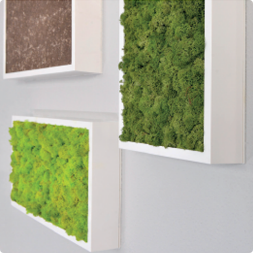Rikki Cane
$154.00
Rikki don’t lose that number. Bet that takes you back a few years (1974 and one of our favorites by Steely Dan)? Well, our Rikki is a great little number from the tried-and-true Dracaena family of plants that are great for indoor use. The Rikki is a variegated plant with yellow or lime green patterns on its green leaves so it comes with a built-in good vibe. It’s perfect for home or office – stands up straight every day, doesn’t require a lot of attention, and pumps out enough oxygen to offset a room full of 70’s rockers. Order your Rikki today, break out the vinyl record collection, and rock on. The Rikki Cane is currently available on one size: 4-5′ in a 10″ grow pot.
Shown here in a Golden Quartz Phoenix Square planter, sold separately.
Plant Details
| Size | 4-5' |
| Difficulty | Easy Care Level |
| Light | Low Light, Medium Light |
| Pet Friendly | This plant may be toxic to pets |
Our 30-Day Guarantee
Description
It’s a pleasure to introduce Rikki Cane. Although a Dracaena this one’s a little different: Rikki is relatively new, belonging to the Deremensis species of Dracaena, which includes not only the “Rikki,” but also Janet Craigs, Warneckiis and Compactas.
Watering
Like other members of the Dracaena family, it prefers its root zone on the dry side; so make sure the soil dries out between watering’s. See our watering guide for more information.
Light
Although it’s a Dracaena, the Rikki Cane prefers low or moderate light. But, If the yellow coloring on the leaves begin to fade, move the plant into slightly brighter light. Again, avoiding direct sunlight. Or it will burn the leaves very quickly.
Nutrition
The Rikki Cane will not need to be fed during the first 6 months after it has shipped. During this time, it will use the residual nutrients from nursery production. After 6 months, it can be fed quarterly with a complete fertilizer formulated for interior plants. Please refer to our nutrient guide for details.
Cleaning
This plant, with its plentiful leaves is a bit more challenging to clean. While we prefer a cleaning regimen with water and a light soap solution, it would be okay to break out the feather duster on this plant. Make sure your feather duster is clean though – it’s a primary way to get bugs from one plant to another.
Pruning
In the right light, the Rikki Cane can grow 8-12 feet tall. No need to worry, it might be a fast-growing plant. I assure you, it wont be over night. Giving you a long time to enjoy. Albeit a low-maintenance plant, Some pruning to maintain height or a desired shape will be needed. Peel off any brown or yellow areas on the leaves using your hands. To maintain the look, on the leaves trim to a point matching its shape, using sharp scissors. Or you can go barber, and give it a more uniform look. Bringing the leaves together in a ball like shape at the top and give the ol’ blunt cut.
Pests
The Rikki can attract mealybugs and mites. MealyBugs will be the main pest, sometimes scale will affect the plant too. So, keep it clean. Look for the white cottony mealybugs at the base of the leaves and on the stems; mites will hide on the bottom side of the leaves and produce webs. If you see either of these, break out the spray bottle with a light soap solution and spray & wipe them daily ’til they’re gone.
Trouble
In good light, this plant will not give you any trouble – provided you water it occasionally.
You may also like…
There are no reviews yet.



















Customer Reviews for
Rikki Cane